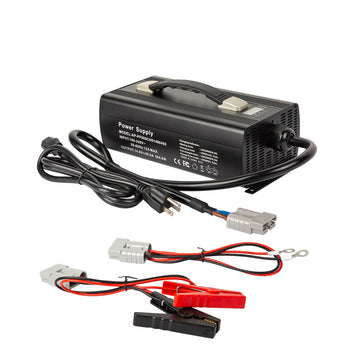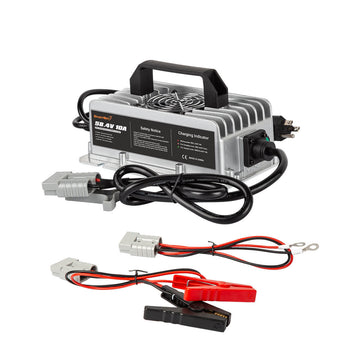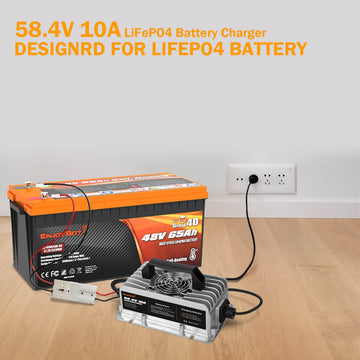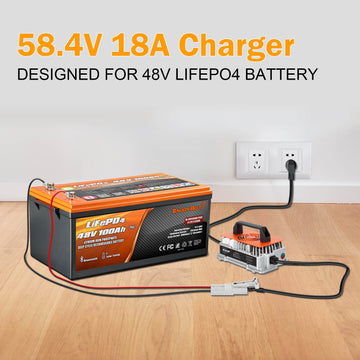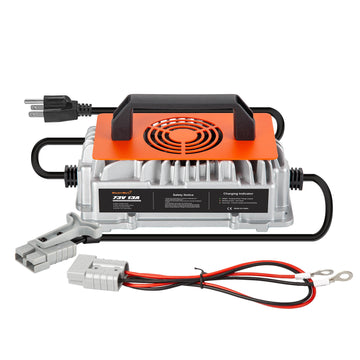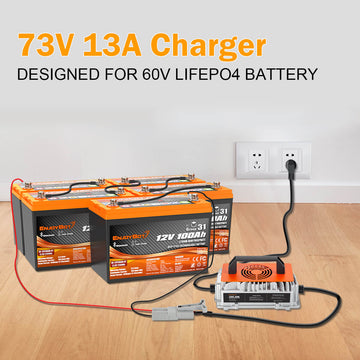Choose the Best Size Lithium Battery for Your Trolling Motor
Selecting the appropriate size lithium battery for your trolling motor is crucial for optimizing your boating experience. This guide will walk you through the key considerations and steps to ensure you make an informed decision.
Table Content of this article:
-
Understand Your Trolling Motor’s Voltage System
-
Battery Voltage Requirements
-
Battery Amperage Draw
-
Recommended Battery BCI Sizes for Common Trolling Motor Setups
-
Evaluate the Battery’s Durability and Lifespan
-
Battery Warranty and Reliability
-
Battery Budget Considerations
1. Understand Your Trolling Motor’s Voltage System
Trolling Motor Voltage Systems for Kayaks or Boats
Choosing the right voltage system for your kayak or boat's trolling motor is essential for optimal performance and longevity. Popular brands such as Minn Kota, Newport Vessels, MotorGuide, and Watersnake offer various voltage systems tailored for different types of watercraft. Here’s a breakdown:
12-Volt Systems
Application: Smaller boats, inflatables, canoes, and kayaksDetails: 12-volt trolling motors are the most common and versatile option, ideal for lightweight and smaller watercraft. These systems are easier to handle, requiring only one battery, and are perfect for freshwater use.
Specific Models:
Minn Kota Endura C2: Popular for kayaks and small boats.Newport Vessels NV-Series: Commonly used for kayaks, canoes, and inflatable boats.
MotorGuide Xi3: Frequently chosen for smaller boats and kayaks.
Watersnake ASP T24: Favored for kayaks and small boats.
24-Volt Systems
Application: Medium-sized boats, larger kayaks, and fishing boats24-volt systems offer more power and longer run times than their 12-volt counterparts. These motors require two 12-volt batteries connected in series and are suitable for more demanding conditions and heavier loads.
Specific Models:
Minn Kota Terrova: Suitable for larger fishing boats.
MotorGuide Xi5: Available in 24-volt options for larger fishing boats.
Watersnake Shadow Series: Designed for medium-sized boats.
36-Volt Systems
Application: Larger boats and heavy-duty fishing vesselsDetails: These high-power motors are designed for larger, heavier boats. They provide maximum thrust and extended battery life, requiring three 12-volt batteries. They are ideal for saltwater and rougher conditions.
Specific Models:
Minn Kota Terrova: Available in a 36-volt version for demanding boating needs.MotorGuide Xi5: Aimed at large fishing boats requiring substantial power.
Critical Considerations for Choosing a Trolling Motor Voltage System
Boat Size and Weight: Larger and heavier boats require more power, thus a higher voltage system.
Fishing Environment: Freshwater typically needs less power than saltwater. Rougher conditions may also demand higher voltage systems.
Battery Capacity: Higher voltage systems provide longer run times but require more batteries.
Usage Frequency: Frequent and extended use might benefit from higher voltage systems for durability and performance.
You can choose the suitable trolling motor by understanding the specifics of each voltage system and considering your boat's size, fishing environment, battery capacity, and usage frequency.
2. Battery Voltage Requirements
When selecting a lithium battery for your trolling motor, it’s crucial to match the battery voltage with the motor’s requirements. Enjoybot offers LiFePO4 deep cycle batteries designed to provide consistent power and extended runtimes compared to traditional SLA batteries. These batteries are lighter and more durable, making them reliable for various boats.Enjoybot LiFePO4 Trolling Motor Battery Options:
12V 100Ah Battery: Suitable for 30-55 lbs trolling motors.
- 12V 100Ah self-heating group 24 battery
- 12V 100Ah low-temp group 31 battery
- 12V 150Ah self-heating group 31 battery
- 2*12V 100Ah self-heating group 24 battery
- 2*12V 100Ah low-temp group 31 battery
- 2*12V 150Ah self-heating group 31 battery
- 3*12V 100Ah self-heating group 24 battery
- 3*12V 100Ah low-temp group 31 battery
- 3*12V 150Ah self-heating group 31 battery
- 36V 100Ah low-temp group 8D battery
- Extended Runtime: They last twice as long on a single charge.
- Longer Lifespan: Their overall lifespan is twice as long as that of traditional batteries.
- Lightweight: They weigh half as much as traditional SLA batteries.
3. Battery Amperage Draw
Determine the Current Draw (Amperage): To determine the current draw of your trolling motor at different speeds, consult the motor's manual or the manufacturer’s specifications online. For example, to estimate how long a 12-volt trolling motor drawing 30 amps at its highest speed can run on a 12V 100Ah lithium battery, including considering Reserve Capacity, follow these steps:
1. Calculate Battery Run Time Without Reserve Capacity:
Battery Capacity (Ah): 100Ah
Current Draw (A): 30A
Run Time (hours)=Current Draw (A)/Battery Capacity (Ah)=30 A/100 Ah≈3.33 hours
2. Consider Reserve Capacity:
Reserve Capacity (RC) typically refers to the time a battery can provide a specific current (e.g., 25 amps) before the voltage drops below a certain level. For a lithium battery, RC might be less critical if it provides a stable voltage and high efficiency across its discharge cycle.
However, assuming the Reserve Capacity of the battery indicates that it should not be fully discharged, let's assume the usable capacity is about 80% of the total capacity.
Usable Capacity=Battery Capacity×Usable Percentage=100 Ah×0.80=80 Ah
So, the revised run time is:
Run Time (hours)=Current Draw (A)/Usable Capacity (Ah)=30 A/80 Ah≈2.67 hours
If the Reserve Capacity suggests, you should use only 80% of the battery's total capacity to ensure longevity and reliability, a 12V 100Ah lithium battery can run a trolling motor drawing 30 amps for approximately 2.67 hours under optimal conditions.
Note: The actual run time can vary based on factors like battery health, actual current draw, and environmental conditions.
4. Recommended Battery BCI Sizes for Common Trolling Motor Setups

Selecting the correct battery and BCI (Battery Council International) group size for your trolling motor setup ensures adequate power and optimal performance. Here are some general guidelines based on standard trolling motor setups:
Thrust and Voltage Requirements
Thrust Ratings and Corresponding Voltage:
50-70 lbs Thrust: Typically requires a 12V battery.
70-100 lbs Thrust: Typically requires a 24V battery (two 12V batteries in series).
100+ lbs Thrust: Typically requires a 36V battery (three 12V batteries in series).
Standard BCI Group Sizes for Trolling Motors
Here are recommended BCI group sizes based on thrust ratings and usage duration:
Group 24: Suitable for light to moderate usage (e.g., 50-70Ah).
Group 27: Suitable for moderate to heavy usage (e.g., 80-100Ah).
Group 31: Suitable for extended usage or higher capacity needs (e.g., 100+Ah).
Two Group 24 Batteries: For light to moderate usage.
Two Group 27 Batteries: For moderate to heavy usage.
Two Group 31 Batteries: For extended usage or higher capacity needs.
Three Group 24 Batteries: For light to moderate usage.
Three Group 27 Batteries: For moderate to heavy usage.
Three Group 31 Batteries: For extended usage or higher capacity needs.
Capacity (Ampere-Hour, Ah) Recommendations
Light Usage (Short Trips, Less Power Demand): 50-75Ah per battery.
Moderate Usage (Regular Trips, Moderate Power Demand): 85-100Ah per battery.
Heavy Usage (Long Trips, High Power Demand): 100-125Ah per battery.
Additional Considerations
Reserve Capacity: Indicates how long the battery can supply a constant load before discharging completely. A higher reserve capacity is beneficial for extended trolling.
Weight and Space: Ensure your boat can accommodate the size and weight of the batteries.
Maintenance: AGM and lithium batteries require less maintenance than traditional flooded batteries.
5. Evaluate the Battery’s Durability and Lifespan
The Enjoybot LiFePO4 battery is engineered with meticulous attention to durability and efficiency. Unlike traditional Sealed Lead Acid (SLA) batteries, which typically offer a lifespan of 300-500 cycles, the Enjoybot battery outshines with an impressive endurance of up to 5000 cycles. This durability is maintained even when the battery is discharged to 80% depth of discharge (DOD).
6. Battery Warranty and Reliability
Look for reputable brands that offer a good warranty. This indicates confidence in their product and provides peace of mind. Enjoybot provides a warranty covering defects in materials or workmanship and desired performance when used according to specifications, starting from the date of purchase. New Batteries: Covered for ten years under conditional warranty. Used Batteries: Covered for three years.
7. Battery Budget Considerations
Initial Cost: Lithium batteries are more expensive upfront than lead-acid batteries. However, their longer lifespan and efficiency can offset the initial cost. Long-term Savings: Factor in the savings from reduced replacement frequency, lower maintenance costs, and improved performance.
In conclusion
By carefully evaluating these factors, you can choose the lithium battery size to match your trolling motor and enhance your boating experience. Whether you prefer the reliable Minn Kota, the specialized Newport Vessels, the versatile MotorGuide, or the focused Watersnake, a perfect trolling motor is waiting to power your adventures on the water.


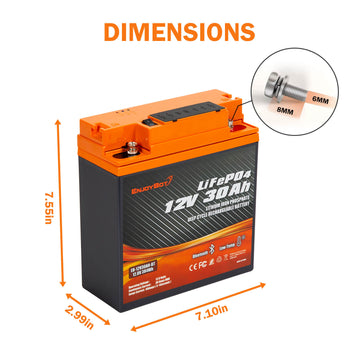
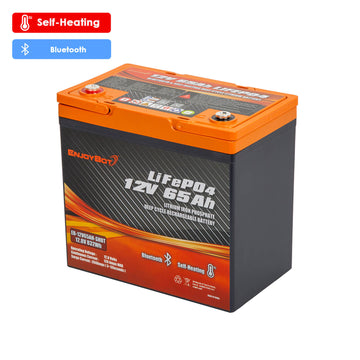
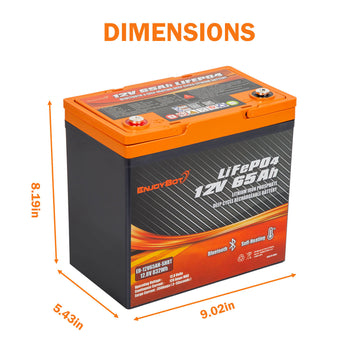
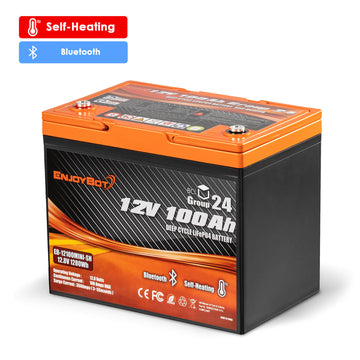
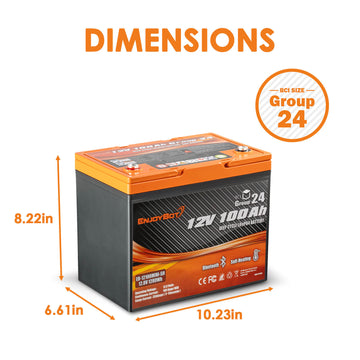



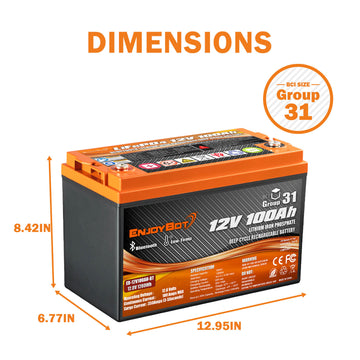

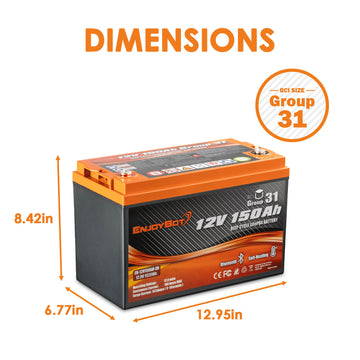



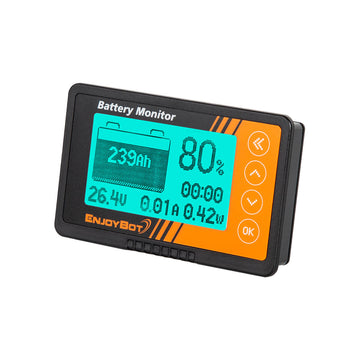
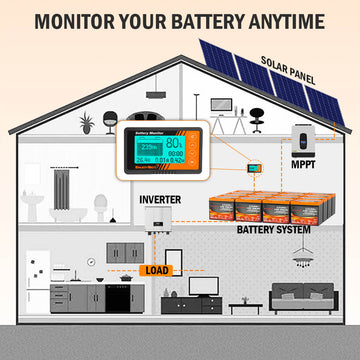
![[Upgraded Version] Enjoybot 14.6V 20A Waterproof Mountable LiFePO4 Lithium Battery Charger For 12V LiFePO4 Battery](http://enjoybotbattery.myshopify.com/cdn/shop/files/14.6V_20A_Waterproof_Battery_Charger_1_360x.jpg?v=1752565609)
![[Upgraded Version] Enjoybot 14.6V 20A Waterproof Mountable LiFePO4 Lithium Battery Charger For 12V LiFePO4 Battery](http://enjoybotbattery.myshopify.com/cdn/shop/files/14.6V_20A_Waterproof_Battery_Charger_2_360x.jpg?v=1752637374)
